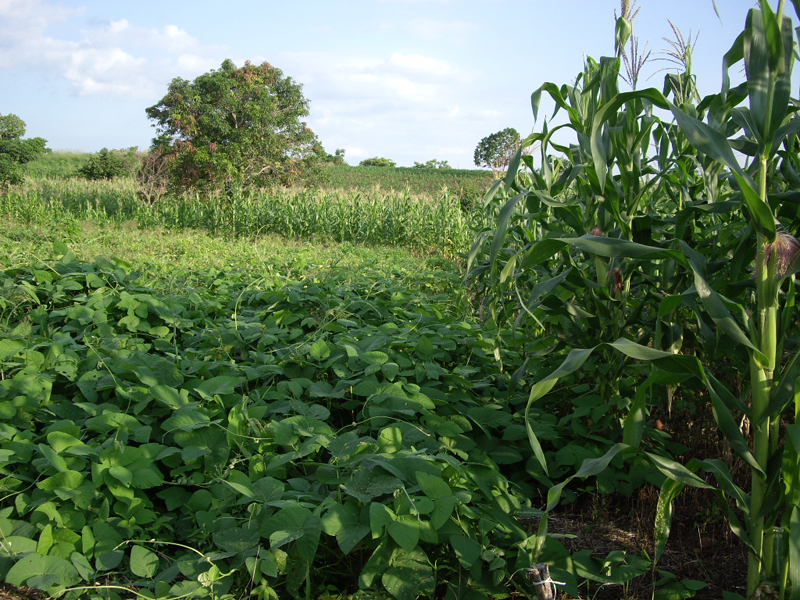Velvet bean and maize: a green rotation
February 23, 2015
Recent research in Mexico suggests rotating the use of a local cover crop can improve soil fertility and yields of maize (corn) harvests.
 Maize is a major staple food in Mexico, but it is a hungry plant. It pulls nutrients like nitrogen from the soil. Crops like velvet beans, however, are “nitrogen fixers.” They pull nitrogen from the air and convert it into a usable form.
Maize is a major staple food in Mexico, but it is a hungry plant. It pulls nutrients like nitrogen from the soil. Crops like velvet beans, however, are “nitrogen fixers.” They pull nitrogen from the air and convert it into a usable form.
Scientists grew velvet bean on fields from May through November. They then cut the leaves and stems, leaving them on the fields. Two weeks later, they planted the typical maize crop. Harvests the following May showed a 60% increase in maize yields.
It also reduced need for chemical fertilizers and herbicides. Allowing the cut leaves and stems to dry in place added more nitrogen and phosphorus to the soil. Additionally, the leaves’ calcium helped stabilize the pH of the soil. While growing, the leaves shaded the soil, preventing weeds, and saving time and money. The velvet bean also protected the soil from weathering due to erosion.
Leaving the leaves on the soil makes use of “green manure.” According to lead researcher Angel Ortiz-Ceballos, green manure is “an herbaceous, shrubby or woody plant material that … is incorporated into the soil when it is still green or before it reaches full maturity. Green manure is used to improve or maintain the soil reservoir of nutrients which are used by plants and soil organisms.”
Because green manure increases soil organic matter, it encourages the presence of other helpful organisms. One such organism is the earthworm. They make tunnels in the soil and excrete nutrients into the soil. The soil is softer, more porous, provides a more favorable microclimate, and makes more nutrients available for other crops.
Ortiz-Ceballos’ research provides the science behind local practices. “Velvet bean has been used in southern Mexico for over 40 years by the Chontal and Popoluca indigenous peoples,” says Ortiz-Ceballos. “They observed that when plots where velvet bean had been abundant were clear-cut to grow maize, yields were higher. Others realized that grasses were scarce in sites where velvet bean was abundant, and thought velvet bean could be used to get rid of weed grasses growing in maize plots. Thus, they innovated the winter harvest by introducing the corn-velvet bean rotation system.”
Although uncommon in the U.S., velvet bean has multiple uses in Mexico. Velvet bean seeds are brewed to make infusion drinks (like coffee), and are often referred to as “nescafe” or “pica-pica mansa.” The leaves, stems and seeds are fodder for cattle, pigs, chickens, turkeys, or sheep.
A program initiated by the Mexican government also used velvet bean, but grew it continuously along with the corn crops. The large amount of ground cover encouraged rodent damage, and also smothered new corn plants as they emerged. These government techniques were not widely adopted by local farmers.
Ortiz-Ceballos expects Mexican farmers in tropical areas will easily adopt the new rotation technique. Velvet bean seed is inexpensive and readily available.
Researchers performed the velvet bean rotation research at the INBIOTECA- Universidad Veracruzana, Xalapa, Mexico. The paper was published in Agronomy Journal.
